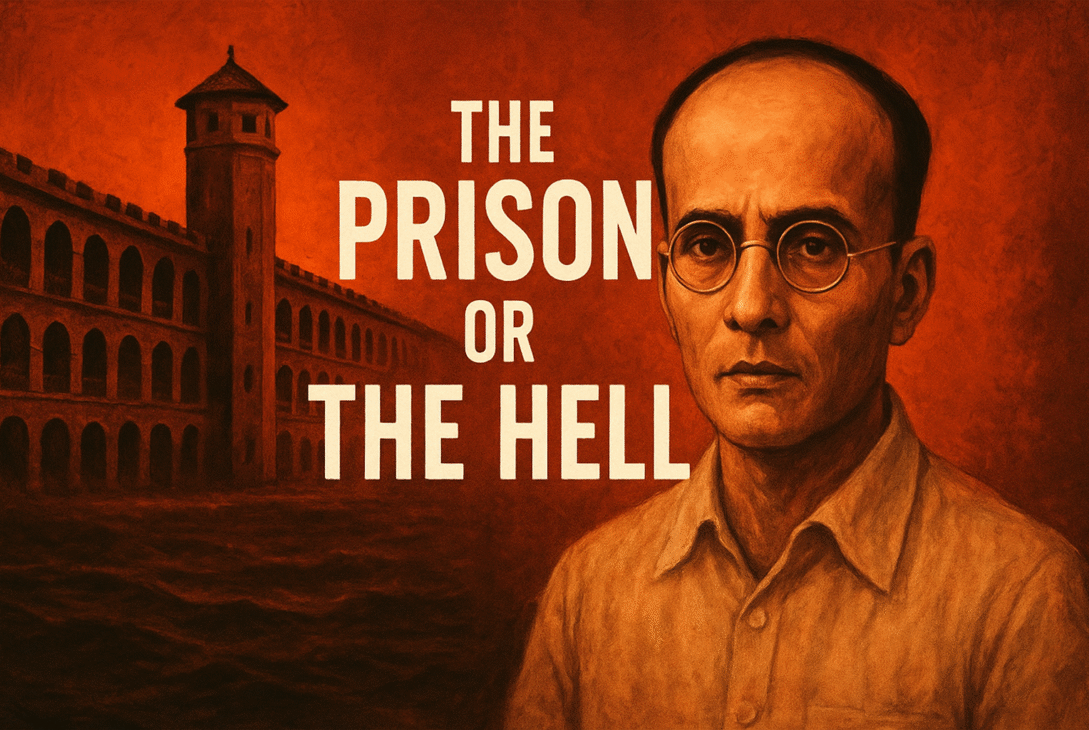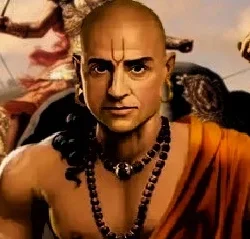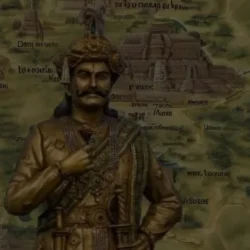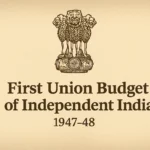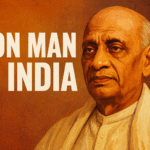Kala Pani Punishment was more than exile; it was a calculated tool of fear. The British wielded it to crush the spirit of Indian freedom fighters. Among them was Vinayak Damodar Savarkar, whose ordeal in the Cellular Jail became a defining example of unbreakable resistance in India’s struggle for freedom.
The Birth of a Hell: Cellular Jail in Andaman
The British became increasingly paranoid following the Revolt of 1857. The uprising shook their rule. It proved that a single spark could ignite millions. Consequently, they needed a place where they could bury rebellion forever. A place far from India. A place where no voice could escape.
So they chose the isolated Andaman Islands. Surrounded by an endless sea, these islands became a natural prison. Here, they created a penal colony designed to break the toughest revolutionaries.
Construction of the Cellular Jail began in 1896. It took nearly ten years to complete. The design followed Jeremy Bentham’s Panopticon model. The jail had seven wings. Each wing radiated from a central watchtower like spokes of a wheel. One guard could watch hundreds of prisoners without being seen.
There were 696 tiny cells in total. Each cell was only 4.5 meters by 2.7 meters. The walls ensured complete isolation. Prisoners could not see or speak to each other. Every part of the structure was engineered to crush hope.
The remote location made escape unattainable. Even if someone managed to break free, the vast ocean posed a nearly insurmountable barrier.


Veer Savarkar’s Arrival and Immediate Ordeal
Savarkar reached the Cellular Jail in 1911. The British were terrified of him. They feared he could inspire a rebellion even behind bars. Because of this, they emptied an entire row of cells before he arrived. They wanted absolute isolation.
His cell was dark and suffocating. The ventilator sat high at three meters. Light barely entered the room. Inside the cell were two small containers. One held water. The other served as a toilet. Many prisoners preferred the floor over the filthy pot.
Psychological torture was constant. The locks on the cell were designed to mock the prisoners. Jailers often threw the key near the inmate after locking the door. It made escape seem close yet impossible. Every detail attacked the mind.
Savarkar slept on the hard floor. He endured foul smells, thick darkness, and constant shouts from criminal prisoners nearby. The environment itself felt like hell.
The Brutal Torture and Slave Labour
The British wanted to crush every revolutionary physically and mentally. They forced prisoners to perform backbreaking labour. The most feared machine was the oil mill. Prisoners called it the “suicide friend.”
Savarkar had to wear a single cloth strip and push the heavy oil grinder. The task demanded impossible strength. Each man had to produce sixteen pounds of mustard oil or eighty pounds of coconut oil daily. Failure led to whipping, chaining, and extended torture.
Barin Kumar Ghosh, a fellow revolutionary, described the coconut fiber task vividly. Prisoners had to hammer coconut shells into fiber. A man had to produce two pounds a day. It sounded simple. But the labour consumed every drop of energy. Many collapsed. Some lost their sanity.
Food added to the torture. The meals were filthy. They often contained stones and worms. Even animals would reject such food. But the prisoners had no choice. Hunger and weakness became constant companions.
Medical care was almost nonexistent. Many died of exhaustion. Others died from infections caused by beatings. The jail was designed to turn strong men into broken shadows.
Resistance from the Hellhole
Despite the cruelty, Savarkar refused to surrender. He turned his suffering into resistance. He encouraged prisoners to think, learn, and fight mentally.
Savarkar persuaded the jail authorities to allow a small library. He taught fellow prisoners to read and write. Many learned to read newspapers for the first time. These moments of learning became sparks of hope.
When direct communication became impossible, Savarkar created a secret code. He tapped messages on iron bars. The sound travelled from cell to cell like a hidden lifeline. Prisoners planned protests, shared news, and kept morale alive.
The Hunger Strikes
From 1932 to 1937, suffering reached a breaking point. Prisoners launched hunger strikes demanding basic human rights. The movement grew rapidly. On 12 May 1933, hundreds refused food.
The British panicked. They began force-feeding prisoners with rubber pipes. Many choked. The procedure was brutal. The pipe often tore throats and lungs.
Three brave men—Mahavir Singh, Mohan Kishore Namdas, and Mohit Moitra—died during force-feeding. Their bodies were tied to stones and thrown into the sea. Even death did not earn them dignity.
These tragedies reached India. Newspapers exposed the horrors. Public outrage surged. Gandhi, Tagore, and other leaders demanded action. The Congress Working Committee sent a telegram to the British government. The pressure became impossible to ignore.
After 36 days, the hunger strike ended. It marked the beginning of reforms and the decline of the Kala Pani system.
The Legacy of Kala Pani
By 1938, the British began shifting political prisoners back to India. The terror of the Cellular Jail slowly ended. However, its impact remained etched in history.
The jail later fell into Japanese hands during World War II. Ironically, the British themselves became prisoners in the same hell they created. The cycle of fate completed itself.
After independence, the Indian government converted the Cellular Jail into a national memorial. The silent corridors still echo with the suffering of Savarkar and thousands of revolutionaries.
Kala Pani Punishment stands as a symbol of cruelty—and also of indomitable courage. Savarkar’s unbroken spirit turned suffering into a symbol of resistance, making Cellular Jail not just a prison, but a crucible for the fight for freedom.
Conclusion
Veer Savarkar entered the Cellular Jail as a prisoner. But he emerged as a symbol of an unbreakable spirit. He endured torture, isolation, hunger, and humiliation. Yet he fought with intellect, courage, and vision.
The story of Kala Pani Punishment reminds us that freedom was not a gift. It was earned through unimaginable sacrifice. Cellular Jail remains a living monument to that truth.
